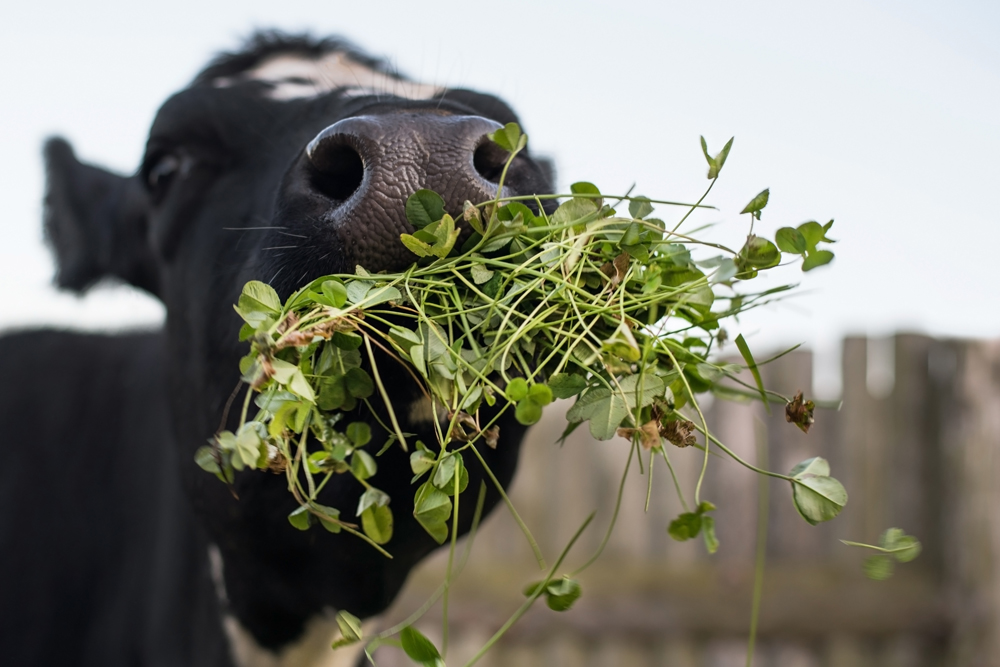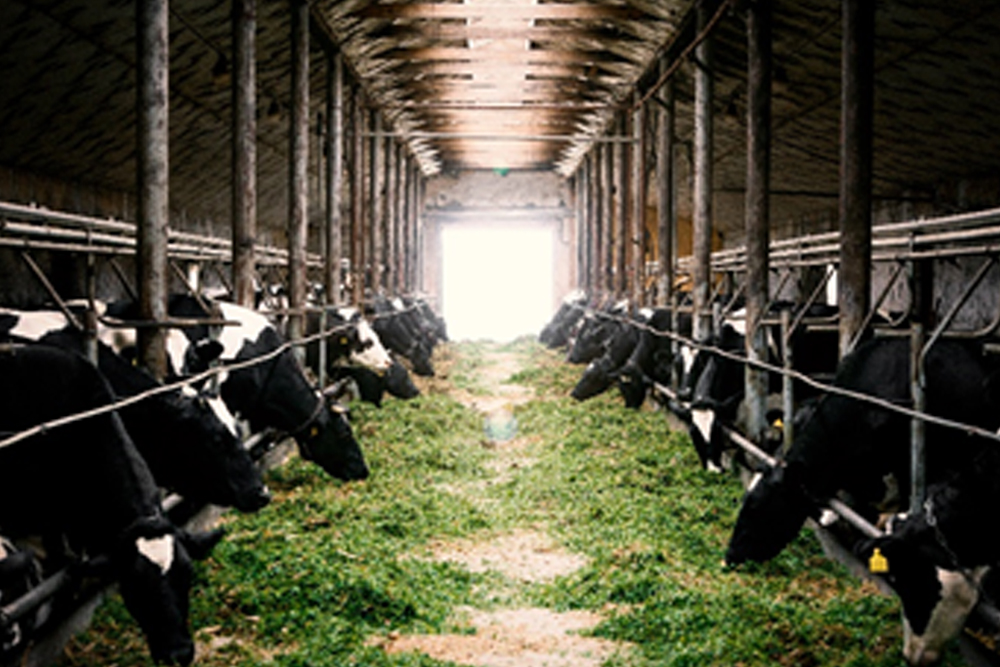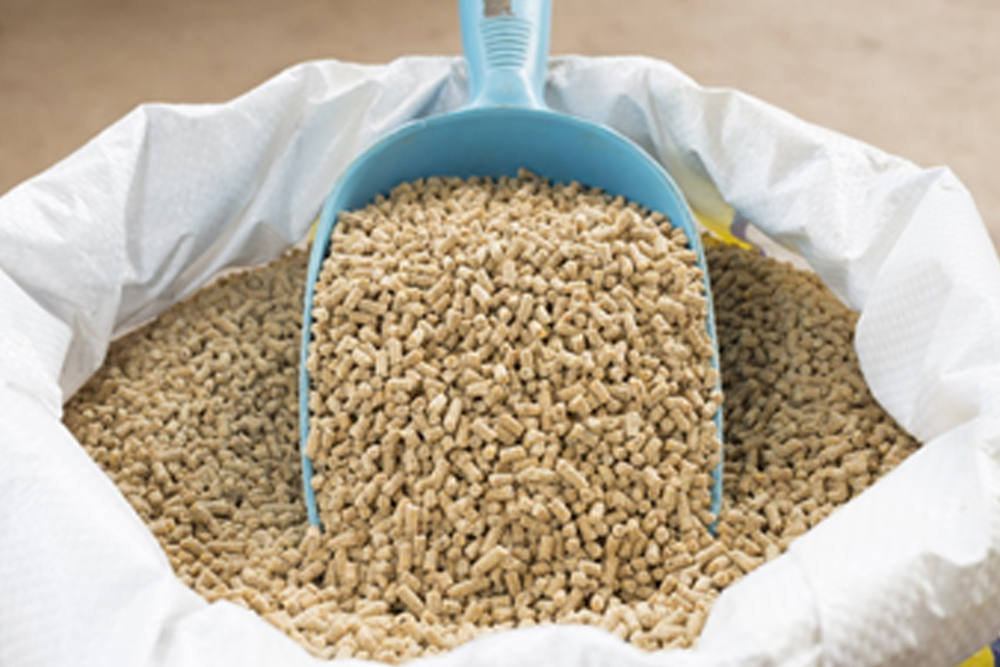ROLE OF PROTEIN IN DAIRY COW NUTRITION

During lactation, the nutritional requirement of cows get increased as more nutrients are required for the production of milk and milk components. Meeting these requirements efficiently especially for energy and protein are challenging for farmers. Their diet must have sufficient nutrients to maintain the health and other metabolic functions of the cattle.
Cows need protein for their different metabolic functions like growth, digestion, reproduction, lactation and many more. Animal’s whole body functions are highly dependent on protein either directly or indirectly. The protein content in dairy feed is mostly measure as crude protein (CP) but it is not a direct measure of protein content in the diet rather it is an estimates based on the content of nitrogen in it. Protein contains 16% Nitrogen, so crude protein content get multiplied by 6.25 to get the actual amount of the dietary protein.
Cows need protein for their different metabolic functions like growth, digestion, reproduction, lactation and many more. Animal’s whole body functions are highly dependent on protein either directly or indirectly. The protein content in dairy feed is mostly measure as crude protein (CP) but it is not a direct measure of protein content in the diet rather it is an estimates based on the content of nitrogen in it. Protein contains 16% Nitrogen, so crude protein content get multiplied by 6.25 to get the actual amount of the dietary protein.
Requirements of Crude Protein
The amount of required crude protein in the diet of dairy cows depend on the following points:
The amount of required crude protein in the diet of dairy cows depend on the following points:
- Energy status of cow
- Lactation stage
- Milk production
- Amino acid profile of feed
- Quality of feed
- Surrounding temperature
- Activity
Normally, in pasture based systems, dietary protein does not limit the production of milk in cows except when high amount of low protein supplement (maize silage, barley) are added in feed. And during dry summers the protein content decline in pasture, resulting in the limited milk production.
Components of Crude Protein
Crude protein basically include true proteins (nitrogen plus amino acids) which can be broken further into rumen degradable protein (RDP) while digestion. RDP includes soluble protein and undegradeable dietary protein (UDP). Non protein nitrogen and un-digestible protein also a part of crude protein. Dairy cows do not have the ability to store protein within their body, due to which they demand a constant supply of protein through feed to fulfil their daily requirement of protein.
Crude protein basically include true proteins (nitrogen plus amino acids) which can be broken further into rumen degradable protein (RDP) while digestion. RDP includes soluble protein and undegradeable dietary protein (UDP). Non protein nitrogen and un-digestible protein also a part of crude protein. Dairy cows do not have the ability to store protein within their body, due to which they demand a constant supply of protein through feed to fulfil their daily requirement of protein.

Dairy cows differ from other single stomach mammals in the sense that they do not always require amino acids for the synthesis of protein instead they can use non protein nitrogen sources (e.g. urea) for the synthesis of amino acids that can be used for the synthesis of microbial protein.
Ruminants also has the ability to recycle their nitrogen for later use. If the requirement of protein raised from the available protein supply in diet, large amount of nitrogen get recycled to overcome this need, while in other mammals this nitrogen lost from the body in the form of urine.
Ruminants also has the ability to recycle their nitrogen for later use. If the requirement of protein raised from the available protein supply in diet, large amount of nitrogen get recycled to overcome this need, while in other mammals this nitrogen lost from the body in the form of urine.

PROTEIN AND ITS TYPES
The requirement of protein for lactating dairy cows are much higher as compare to other beef cattle. This is because of the high demand of amino acids needed for the synthesis of milk and its components. The two main systems describing the dietary protein supply and dairy cow requirements are:
The requirement of protein for lactating dairy cows are much higher as compare to other beef cattle. This is because of the high demand of amino acids needed for the synthesis of milk and its components. The two main systems describing the dietary protein supply and dairy cow requirements are:
- Crude protein system
- Metabolizable protein system
Crude protein system
The crude protein system consists of only the total amount of dietary protein or an equivalent amount from non-protein nitrogen source. The crude protein system is relatively simple and conventional way of formulating dairy cow rations.
The crude protein system consists of only the total amount of dietary protein or an equivalent amount from non-protein nitrogen source. The crude protein system is relatively simple and conventional way of formulating dairy cow rations.
Metabolizable protein system
Metabolizable protein system is more complex as compare to crude protein system. It detailed study reveals that not all the crude protein provided to dairy cow may be available for absorption as amino acids.
This system refers to the amino acids mainly absorbs from small intestine and available for metabolic purposes. Metabolizable protein are derived from two main sources in ruminants which includes: rumen un-degraded protein, these protein are those which escape rumen degradation coming from microbial synthesized protein and dietary protein.
The second source is rumen degraded proteins, these proteins are broken down in the rumen. Both protein sources have their own importance and should be kept in consideration while evaluating and formulating processes.
Metabolizable protein system is more complex as compare to crude protein system. It detailed study reveals that not all the crude protein provided to dairy cow may be available for absorption as amino acids.
This system refers to the amino acids mainly absorbs from small intestine and available for metabolic purposes. Metabolizable protein are derived from two main sources in ruminants which includes: rumen un-degraded protein, these protein are those which escape rumen degradation coming from microbial synthesized protein and dietary protein.
The second source is rumen degraded proteins, these proteins are broken down in the rumen. Both protein sources have their own importance and should be kept in consideration while evaluating and formulating processes.
PROTEIN SOURCES
Most protein sources come from either plant source or animal source at Dasan Feeds we use purely plant based protein sources. There are numerous sources of protein supplements available that can be fed to meet the requirement of an animal’s protein demand. Limitations on some of these may be for palatability reasons and keeping the protein fractions within the recommended ranges.
Most protein sources come from either plant source or animal source at Dasan Feeds we use purely plant based protein sources. There are numerous sources of protein supplements available that can be fed to meet the requirement of an animal’s protein demand. Limitations on some of these may be for palatability reasons and keeping the protein fractions within the recommended ranges.
Plant based protein sources
Soybean
Soybean is the most preferred and common source of high quality vegetative protein for animal feed manufacture. Soybean meal which is the byproduct after oil extraction. It is the best source for high crude protein content of 45 to 50 percent. It has a balanced composition of amino acids as compare to maize meal for feed formulation.

Other oil meal crops
There are many different possible oil crops other soybean that can be good source of protein for cattle feed each with its own pros and cons for protein supply.
Oil palm, sunflower and oilseed rape can provide much higher proportion of Sulphur containing amino acids (cysteine and methionine). Utilization of oil producing crops as protein source for animals such as palm oil, sunflower, coconut, sesame, cambe or cotton seed To what extent such crops as oil palm, coconut, sunflower, sesame, crambe or cotton (seed) depends on the price the processor cost to obtain the extracted oil. With the exception of soybean, the demand for these particular meals is markedly influenced by their vegetable oil price. Protein-rich meal inclusion from oilseed crops currently remains the key; however, to high quality feed supply for intensive enterprise performance.
There are many different possible oil crops other soybean that can be good source of protein for cattle feed each with its own pros and cons for protein supply.
Oil palm, sunflower and oilseed rape can provide much higher proportion of Sulphur containing amino acids (cysteine and methionine). Utilization of oil producing crops as protein source for animals such as palm oil, sunflower, coconut, sesame, cambe or cotton seed To what extent such crops as oil palm, coconut, sunflower, sesame, crambe or cotton (seed) depends on the price the processor cost to obtain the extracted oil. With the exception of soybean, the demand for these particular meals is markedly influenced by their vegetable oil price. Protein-rich meal inclusion from oilseed crops currently remains the key; however, to high quality feed supply for intensive enterprise performance.
Legumes
Another traditional plant based source of protein for dairy cow feed is legumes. Their production is beneficial for both farms and feed manufacturing purpose. Lupine can yield high levels of crude protein but produce grain which is often low in lysine and Sulphur-containing amino acids.
At Dasan Feeds, we believe that today feed manufacturing is a very competitive activity and consistent feed quality/wanda quality is a key growth driver. To achieve optimal animal performance well balanced diets that satisfy nutrient requirements of the animal is mandatory and for producing these diets accurate formulation is essential. The most accurate formulations result when laboratory analysis of ingredients is available.
At Dasan Feeds, we strive to keep our formulations as consistent, for as long as possible in the firm belief that consistency in quality is the key to get maximum production. Dasan Feeds manufacture high quality Dasan dairy feeds/ Dasan dairy wanda specifically formulated for all stages of dairy and livestock.
Another traditional plant based source of protein for dairy cow feed is legumes. Their production is beneficial for both farms and feed manufacturing purpose. Lupine can yield high levels of crude protein but produce grain which is often low in lysine and Sulphur-containing amino acids.
At Dasan Feeds, we believe that today feed manufacturing is a very competitive activity and consistent feed quality/wanda quality is a key growth driver. To achieve optimal animal performance well balanced diets that satisfy nutrient requirements of the animal is mandatory and for producing these diets accurate formulation is essential. The most accurate formulations result when laboratory analysis of ingredients is available.
At Dasan Feeds, we strive to keep our formulations as consistent, for as long as possible in the firm belief that consistency in quality is the key to get maximum production. Dasan Feeds manufacture high quality Dasan dairy feeds/ Dasan dairy wanda specifically formulated for all stages of dairy and livestock.
